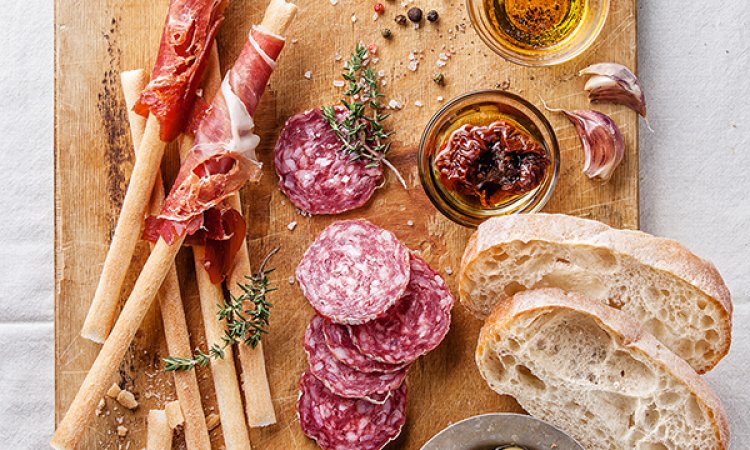
When it comes to agritourism, Italy is a bucket-list destination for experiencing world-class culinary vacations. No trip to Italy is complete without indulging in one of the planet’s most celebrated food cultures.
Let’s dive into a few of Italy’s culinary regions to learn how local specialties are transformed into delectable traditional meals.
Fontina cheese in Valle d'Aosta
High in the mountain valleys of the Alps, Valle d'Aosta is Italy’s smallest and least densely populated region. Don’t mistake the lack of population to mean a lack of history — the region’s famous fontina cheese dates back to the 12th century. Consider going for a hike to see where the Valdostane cows pasture. Their special milk cultivated with alpine pasturing produces gives this world-renowned cheese its delicate flavor. We recommend starting your culinary adventure in Courmayeur at the foot of Mont Blanc. Here, go out of your way to seek out traditional dishes involving fontina, in particular: fondue, polenta cocina (a baked yellow flour polenta dish with butter and fontina), and Valdostana ribs (a crispy chop oozing with fontina).
Balsamic vinegar from Emilia-Romagna
Perhaps the region of Italy with the highest degree of world-famous dishes and ingredients, Emilia-Romagna makes it hard to single out just one thing. The region harbors a city that is synonymous with a unique flavor — balsamic vinegar from Modena. The balsamic vinegar of Modena is on the register of protected ingredients and was granted protected geographical indication status by Europe in 2009.
The places where balsamic is made are known as an acetaia, many of which are easily accessible from Modena by tour. You may be familiar with balsamic vinegar on a salad or perhaps over fresh strawberries for dessert. In Modena, you’ll find many other applications — whether a traditional omelette topped with a balsamic drizzle or panna cotta with a balsamic jelly. Consider a stop at a longstanding spot like Acetaia Pedroni, which has been in the balsamic business since 1862.
Artichokes in Lazio
Home to the city of Rome, Lazio very likely hosts the most cooking holidays in Italy. Many people will visit Rome due to its fame, accessibility, and a wide variety of culinary opportunities. If you do book some cooking classes, consider booking one of the many workshops at Rome’s famous local food markets.
Artichokes are one of the most beloved vegetables cultivated in Lazio. Look around for carciofi alla giudia, a Roman specialty that originated from the city’s Jewish quarter. These are fried artichokes quickly cooked in oil, salted, and handed straight to you to eat. We recommend trying them in May when the local artichokes are in season.
Salami in Tuscany
When it comes to discovering what to eat in Italy, Tuscany is one of the first regions that comes to mind. Famous for its rolling hills, fine wines, and seasonal vegetables, the area has been celebrated in literature and film, including the celebrated travel book Under the Tuscan Sun. Drop by the village of Colonnata to savor one of Tuscany’s gems — lardo di Colonnata. This traditional salami is mostly fat, cured over months in a cold marble case with herbs and aromatics. Over several months the lardo slowly takes on the flavors of the fresh rosemary, garlic cloves, sea salt, and ground pepper it is stored with. It melts in your mouth when served simply on a piece of toast.
Mussels in Puglia
Found at the heel of Italy’s boot, Puglia touches both the Adriatic and the Ionian Sea. As you may have guessed, this means that it’s a haven for all kinds of seafood. One of the region’s most traditional and popular ingredients is the humble mussel. You’ll find mussels incorporated into all sorts of Puglian dishes, whether fried, served with pasta, or in some lesser-known dishes. One of these is tiella — mussels (shells on) baked with potatoes, rice, wine, onions, tomatoes and breadcrumbs. You’ll need to pick the mussels out with their shells, but this is how it has always been done. The wine poaches the mussels in the oven, while breadcrumbs leave a crispy layer on top for texture — delectable.
The tip of the iceberg
We could write several volumes on all the local delicacies found in Italy’s towns and regions. Suffice to say, wherever you find yourself in Italy, make a point of asking locals about what you must eat in their town and region — and find out where to find the most authentic version of that meal. Buon appetito!


